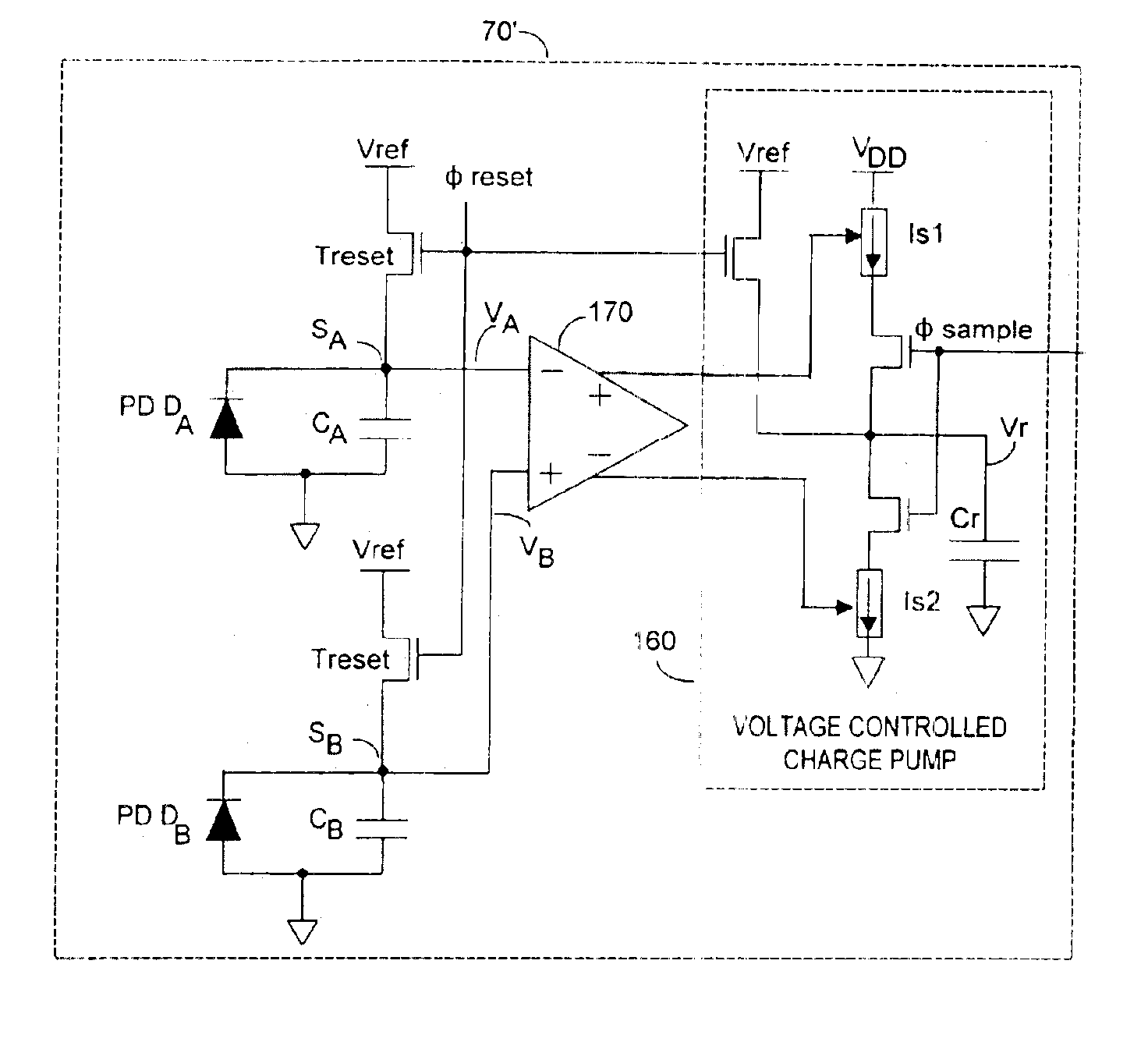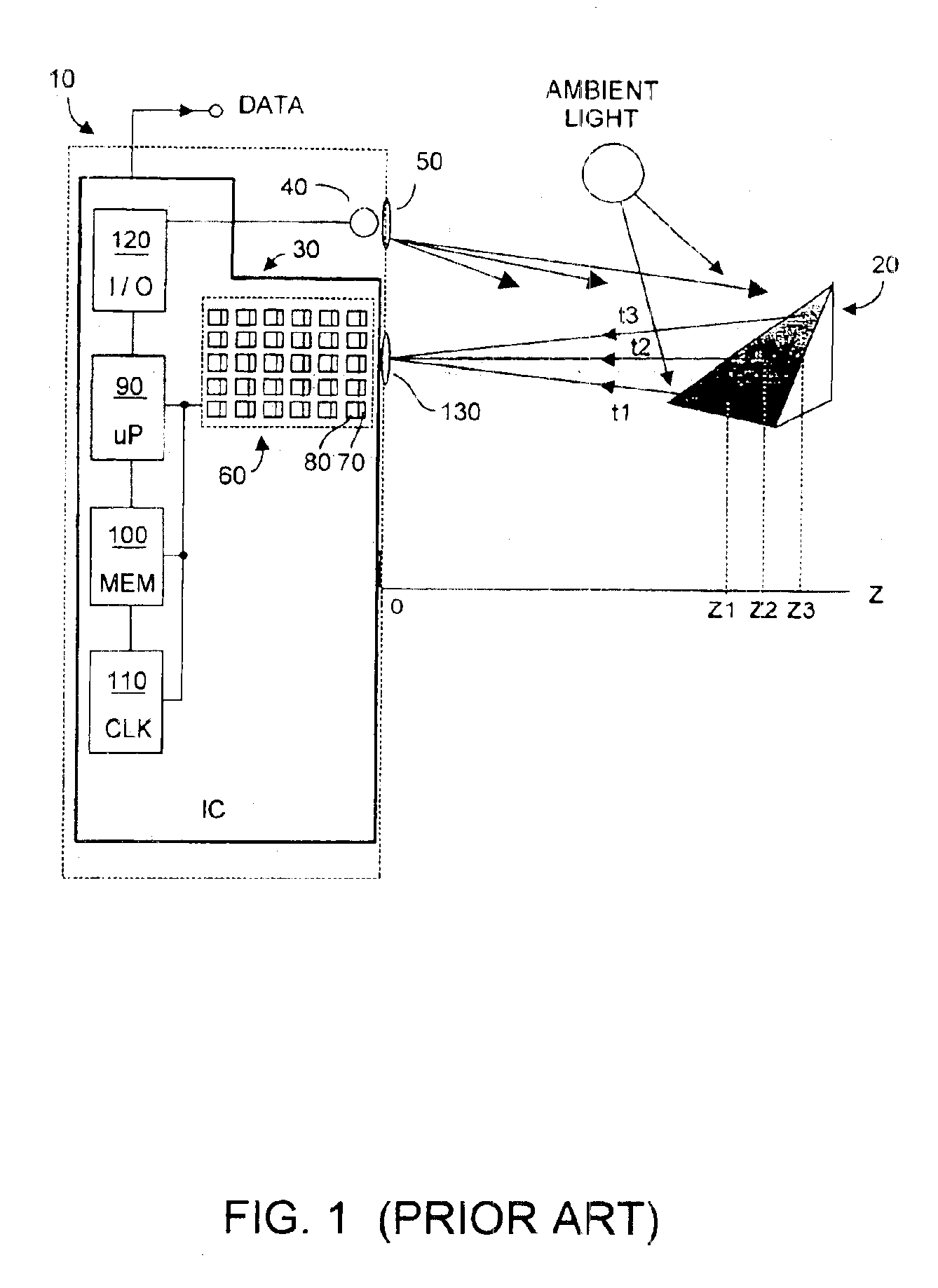Method and system to differentially enhance sensor dynamic range
a dynamic range and sensor technology, applied in the field of optical sensors, can solve the problems of inability to accurately determine distance solely from the amplitude and brightness of an intensity image, inability to accurately determine distance, and inability to accurately report errors, etc., to achieve the effect of increasing the effective differential dynamic range of a differential pixel detector and avoiding saturation effects
- Summary
- Abstract
- Description
- Claims
- Application Information
AI Technical Summary
Benefits of technology
Problems solved by technology
Method used
Image
Examples
Embodiment Construction
[0049]Reference will now be made in detail to the preferred embodiments of the invention, examples of which are illustrated in the accompanying drawings. While the invention will be described in conjunction with the preferred embodiments, it will be understood that they are not intended to limit the invention to those embodiments. On the contrary, the invention is intended to cover alternatives, modifications and equivalents, which may be included within the spirit and scope of the invention as defined by the appended claims.
[0050]FIG. 3A depicts one-half of differential pixel detector 70′, where it is understood that system 10 in FIG. 1 might now employ an array 60 of rows and columns of differential pixel detectors 70′ in lieu of prior pixel detectors 70. In FIG. 3A, only one of the two pixels is shown for ease of illustration, namely photodetector DA (denoted PD DA). Associated with each photodetector in the pixel is a capacitor, CA being associated with DA, where CA can be the c...
PUM
 Login to View More
Login to View More Abstract
Description
Claims
Application Information
 Login to View More
Login to View More - R&D
- Intellectual Property
- Life Sciences
- Materials
- Tech Scout
- Unparalleled Data Quality
- Higher Quality Content
- 60% Fewer Hallucinations
Browse by: Latest US Patents, China's latest patents, Technical Efficacy Thesaurus, Application Domain, Technology Topic, Popular Technical Reports.
© 2025 PatSnap. All rights reserved.Legal|Privacy policy|Modern Slavery Act Transparency Statement|Sitemap|About US| Contact US: help@patsnap.com



